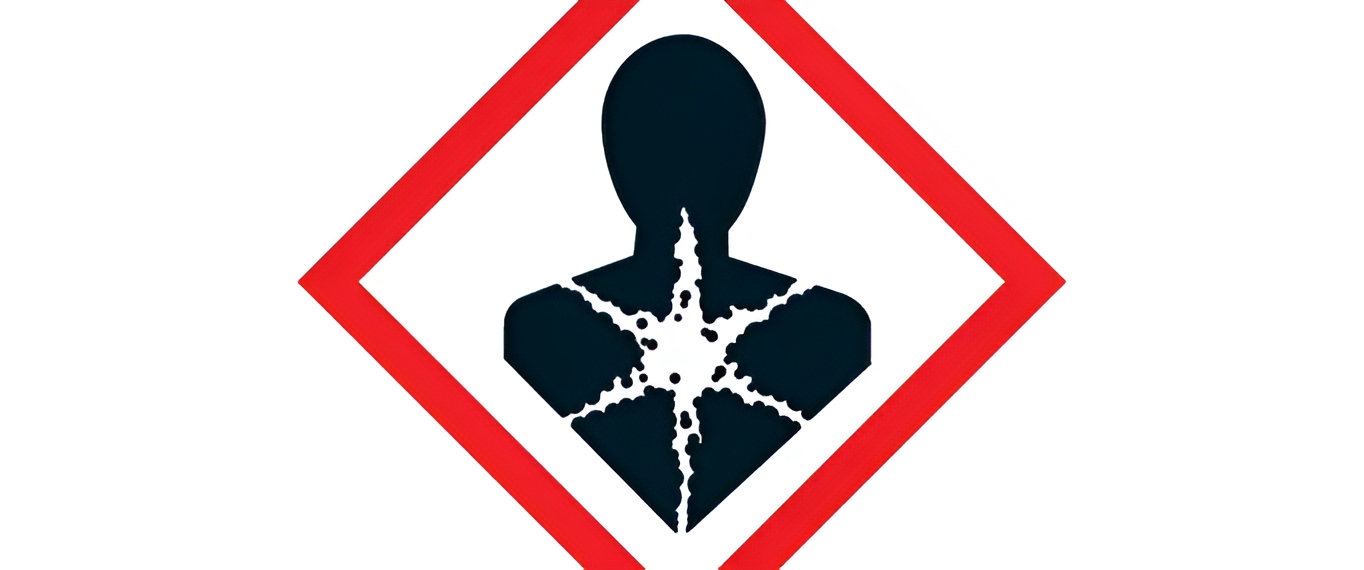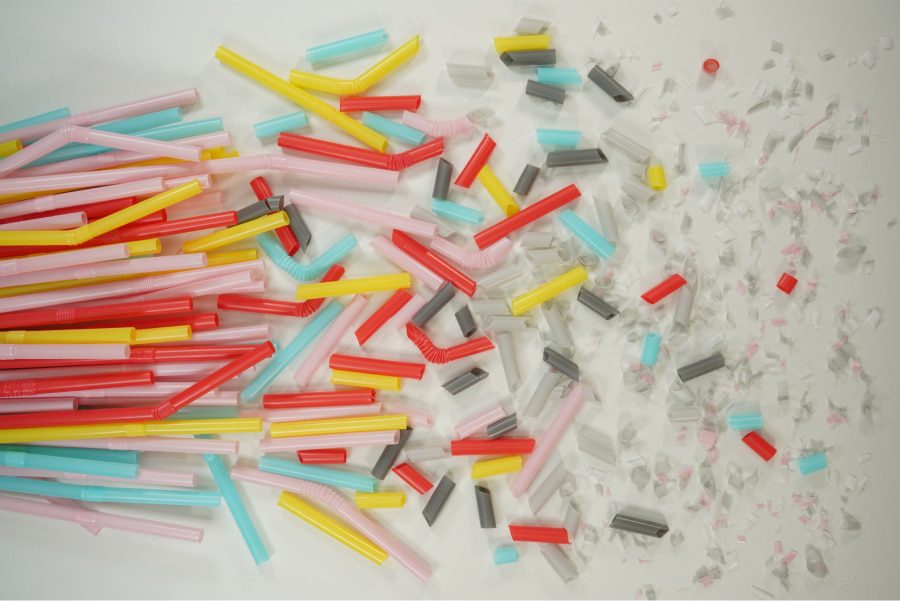Cosmetic regulations in China
Let’s start this tour of the global cosmetic regulations with the Cosmetic Supervision and Administration Regulation (CSAR), which took effect in China on January 1, 2021. This new regulation cosmetics approach outlines the requirements for selling cosmetic products and ingredients in the Chinese market, renowned for its high turnover and growth in the beauty sector. The CSAR’s primary aim is to ensure the safety of finished products through a series of registration and pre-market control measures. The National Medical Product Administration (NMPA) is the regulatory authority overseeing these procedures in China.
Understanding CSAR: Key Definitions and Terminology in Cosmetic Regulation
The implementation of the CSAR introduced a revised definition of a cosmetic product: an industrial chemical product of daily use applied to skin, hair, nails, lips and other body surfaces by rubbing, by spray and other similar methods with the aim of cleaning, protecting, beautifying and modifying them.
Finished cosmetic products are in turn divided into “special” products (hair dyes and perms, freckle removal products, anti-hair loss products, sunscreens and any product with new properties) and ordinary cosmetic products.
Market Entry Compliance: Registration Requirements under CSAR
Under the CSAR, cosmetic products must be registered prior to market entry, which includes submitting toxicological safety data. The registration process, as part of China’s broader regulation cosmetics framework, differs based on the product type. For ordinary products, the technical review of the report may occur on a sample basis post-market launch. In contrast, special products undergo pre-market review by the NMPA. This distinction can significantly lengthen the authorization period for special products.
Ingredient compliance: Navigating safety procedures under CSAR
A safety report must also be submitted on cosmetic ingredients.
When you would like to use a cosmetic ingredient for the production of cosmetics for the Chinese market, you must first check if the ingredient is present on the Inventory of Existing Cosmetic Ingredients in China (IECIC), a list of cosmetic ingredients already authorised by the Chinese competent authority.
If the ingredient is on the list, it will be sufficient to provide the safety information. If the ingredient is not present and therefore classified as “new”, the ingredient’s safety officer will be asked to register it on the NMPA platform. The ingredient will then undergo a post-market surveillance which lasts 3 years. If no safety concerns arise, the ingredient will be added to the IECIC.
Whether you register an existing ingredient or a “new” ingredient, the platform will provide a unique code. This code may subsequently be used by the manufacturer of the finished product during the registration of the latter if the supplier of the ingredient does not want to provide safety information and takes care of the registration of the cosmetic ingredient himself. This will allow you to maintain the confidentiality of the information as it will only be viewable by the NMPA.
Practical Steps for CSAR Compliance
On a practical level, the NMPA registration platform is only available in Chinese and security information must be provided in the same language. In addition, non-Chinese companies must provide the translated business licence and have it authenticated by the local Chinese embassy. Lastly, a responsible person established in China is also required, who can also be appointed by proxy.
Cosmetic Regulations in Europe

The European cosmetics market is extensively regulated, as we’ve covered in various articles on our blog, touching on topics like regulatory compliance for cosmetic product labelling, managing inspections, and handling authority inspections. Like drugs, foods, and other consumer products, cosmetics undergo rigorous evaluations and controls under specific legislation. This is guided by EU cosmetics legislation, which sets standards for the production, distribution, and sale of cosmetics in the European Union, ensuring safety and quality.
In Europe, the production, packaging, distribution, and sale of cosmetics are governed by Regulation 1223/2009. This regulation cosmetics framework aims primarily to protect consumer safety. It provides a standard definition of a cosmetic product and includes provisions to ensure product safety from multiple perspectives. These include manufacturing methods, ingredient control, mandatory information on labels, and expert evaluations.
As Regulation 1223/2009 applies to all EU member states, it’s important to note that the information required on product labels (such as function, warnings, and usage methods) must be presented in the official language of the country where the product is sold.
Current cosmetic regulations in Europe
The current Regulation represents the natural evolution of the old European Directive on cosmetic products, which in the past has provided the rules to ensure product and consumer safety, and which over the years has been the subject of numerous updates that have modified it to adapt it to changes and improvements in the sector. This evolution aligns with EU cosmetics legislation, ensuring ongoing compliance with the latest safety standards.
This Directive had already been considered a complete and protective legislation, so much so that it was taken as an example by other countries, such as the majority of South American countries (e.g. Brazil, Argentina, Chile), the ASEAN states (e.g., Singapore, Malaysia, Vietnam, Philippines, Indonesia, etc.), Saudi Arabia, South Africa, Turkey, etc.
At the end of 2009, a further significant step forward was taken in this direction with the approval, by the European Parliament and the Council, of the aforementioned Regulation 1223/2009 on cosmetics, published in the Official Journal of the European Union on 22 December 2009, which completely replaced the old Directive 76/768/EEC and its amendments. The new EU cosmetics legislation, under Regulation 1223/2009, became the standard that many countries around the world sought to align with.
Key Objectives of the European Cosmetic Regulation
The Regulation’s primary goals are to harmonise existing rules, consider advancements and changes in the sector, and enhance and clarify the current regulations regarding cosmetic safety. These changes were definitively implemented with the Regulation as of July 11, 2013, marking a decade since its introduction.
Automatic Transposition and Key Definitions in EU Cosmetic Regulation
For the first time, the transposition of the Regulation was automatic across all Member States, marking a significant shift in legislative approach. Typically, Directives published in the Official Journal of the European Union are not immediately adopted but must be transposed by individual Member States by a specific date. This allows countries to make modifications to the text, provided they don’t impede the free movement of goods. However, the Regulation differed in its immediate and binding application for all Member States.
Definitions in EU Cosmetic Regulation
The most important is clearly the definition of cosmetic product, which describes it as any substance or mixture, intended to be applied on the external surfaces of the human body (epidermis, hair system and hair, nails, lips, external genital organs) or on the teeth and mucous membranes of the mouth for the purpose, exclusively or mainly, to clean, perfume them, modify their appearance, protect them, keep them in good condition or correct body odours.
Labelling Requirements: Essential Information for EU Cosmetic Products
Article 19 of the EU Cosmetic Regulation specifies that cosmetics can only be marketed if the container which is in direct contact with the product and any secondary packaging (like the carton) display mandatory details. These details must be presented in indelible, easily legible, and visible characters. This aligns with the regulation cosmetics requirements that ensure transparency and consumer safety when marketing products in the European market.
Specifically, the Responsible Persons are required to include the following information on the product label:
- the name and address of the person responsible for placing the cosmetic product on the market;
- the nominal contents at the time of packaging;
- the manufacturing batch number;
- the country of origin for products manufactured in countries not members of the European Union;
- the function of the product, unless it is clear from the presentation of the product;
- special precautions for use;
- the list of ingredients of the product in descending order of weight at the time of incorporation.
Cosmetic regulations in Australia

Legal framework for cosmetic and therapeutic products in Australia
In Australia, a cosmetic product is defined as “a substance intended for use on any external part of the body, or inside the oral cavity, to change its smell or appearance, to clean it, keep it in optimal condition or to protect it”.
A cosmetic product does not fall into the category of therapeutic products, which are regulated by the Therapeutic Goods Administration (TGA).
Overview of Australian regulatory authorities governing cosmetics
The Australian Industrial Chemicals Introduction Scheme (AICIS) is responsible for regulating chemicals. All ingredients of a cosmetic formula must be listed in the AICIS list. If an ingredient is not listed in the inventory, it cannot constitute more than 1% of the formula and must meet several ecotoxicological criteria. In the latter case, it is necessary to submit a complete dossier for the evaluation of the ingredient by AICIS.
The Australian Competition and Consumer Commission (ACCC) regulates label requirements, including the INCI list.
It is usually strongly recommended to follow the labelling guidance provided by experts, as labelling is heavily regulated in Australia.
In order to sell cosmetic products in Australia, cosmetic companies must have an importer based in Australia and registered with AICIS. That importer shall be responsible for the conformity of the products distributed.
Responsibilities of Cosmetic Importers in Australia: Ensuring Compliance with AICIS and TGA Standards
The importer, acting as the Responsible Person for imported cosmetics, must first determine the product’s classification to ensure it is recognized as a cosmetic. This involves a thorough toxicological analysis to assess the formula’s safety. Additionally, the importer must scrutinise the ingredients based on specific regulations to confirm the product’s status as a cosmetic:
A. AIICS (Australian Inventory of Industrial Chemical Substances)
B. Regulation on imports prohibited by customs
C. SUSMP (Standard for the Uniform Scheduling of Medicines and Poisons)
Label and Claim Verification: Adherence to ACCC Standards in Australia
The process of reviewing labels and claims involves ensuring that all required information is accurately presented and justified on the labelling material. While developing a cosmetic label in Australia, it’s crucial to consider various laws and regulations. A good starting point is to follow common practices similar to those in Europe. Just as in the EU, every claim made on the label must be substantiated by specific tests, according to criteria established by the Australian Competition and Consumer Commission (ACCC). This includes a detailed list of ingredients, appropriate symbols, and adherence to legal requirements.
Specific product categories
CBD Products
CBD products are licensed in Australia under a number of very strict conditions:
- In hemp seed oil, for purposes other than internal use and containing 50 mg/kg or less cannabinoids, including 20 mg/kg or less tetrahydrocannabinol
- If labelled, they must carry one of the following warnings:
- Not for internal use
- Do not swallow
Products with SPF
Products with SPF can be considered cosmetic only if sunscreen is the secondary function of the product.
Conclusion of Australian cosmetic regulations
We are well aware that for a cosmetic to be compliant in the EU and UK, it must fulfil specific criteria:
- A PIF (Product Information File) containing the CPSR (Cosmetic Product Safety Report) signed by a Safety Assessor
- An EU CPNP & UK SCPN registration number
- One Responsible Person for the EU and UK
In Australia, unlike in the EU/UK, there is no requirement for a Product Information File (PIF) or notification to specific portals. However, it’s crucial to remember that for a cosmetic product to be sold in Australia, it must adhere to the regulations set by the Australian Industrial Chemicals Introduction Scheme (AICIS), the Therapeutic Goods Administration (TGA), and the Australian Competition and Consumer Commission (ACCC), as previously discussed. While there is no direct equivalent to the EU cosmetics legislation in Australia, the role of the EU/UK Responsible Person is akin to that of the Australian-based importer registered with AICIS, who is similarly responsible for ensuring the conformity and safety of the cosmetic products they import.
USA: Implementing the modernization of Cosmetics Regulation Act of 2022

On December 29, 2022, the Modernization of Cosmetics Regulation Act of 2022 (MoCRA) was enacted, marking a significant overhaul of the U.S. regulatory framework for cosmetics. This Act, the first major federal revision to U.S. cosmetics legislation since 1938, brings cosmetics regulation in line with other consumer products overseen by the Food and Drug Administration (FDA).
As discussed in our detailed article, this new legislation mandates the development of pharmacovigilance systems, registration of manufacturing establishments and products, adherence to Good Manufacturing Practices (GMP), and maintaining safety records and tests. Additionally, MoCRA grants the FDA the power to mandate recalls of cosmetic products and suspend registrations of establishments linked to serious health concerns.
In the following sections, we’ll briefly recap the new obligations covered in our previous article.
- Establishments involved in the manufacture or processing of cosmetics distributed in the United States must be registered with the FDA by December 29, 2023. For new establishments, the rule of 60 days from the start of activity applies. Registration must be renewed every two years. Foreign establishments must have an American agent located on US soil. Establishments which merely label, package, store or distribute cosmetic products, establishments producing ingredients but not finished products and establishments used exclusively for the purposes of product research and evaluation are exempt from registration.
- By December 29, 2023, the so-called “responsible person” – i.e. the manufacturer, packager or distributor whose name appears on the label of the cosmetic product – must submit to the FDA a list of cosmetics already on the market, including its ingredients (within 120 days for cosmetics marketed after that date). The list of products must be updated annually.
- The responsible person must notify the FDA of any serious adverse reactions related to the use of a cosmetic product in the United States within 15 days of receipt of the relevant report. It is also required to keep each adverse reaction statement dossier for 6 years, or 3 years for small companies not involved in the production or processing of cosmetic products.
- The responsible person is required to keep records attesting to the safety of a cosmetic product with “adequate evidence”. Cosmetic products that do not have adequate safety evidence will be considered adulterated.
- The MoCRA introduces changes to the labelling of products: the label must include the coordinates of the responsible person (to whom adverse reactions must be reported), perfume allergens and any professional use.
- The FDA is called upon to establish Good Manufacturing Practices (GMP) to protect public health and ensure that cosmetic products are not adulterated. A regulatory proposal to this effect must be published by December 2024, and final rules must follow by December 2025.
- If the FDA believes that the cosmetic product has been adulterated or is mislabeled and that its use may cause serious consequences for the health of consumers, it may request a voluntary recall of the product from the Responsible Person. If he does not follow up, the FDA may order a mandatory recall. The FDA is also authorised to suspend the registration of an establishment.
Cosmetic regulations in Japan

Legal Framework: Overview of Cosmetic Regulations in Japan
To be sold in Japan, cosmetic products and products belonging to the category “almost-drugs” must comply with:
- The Act on Securing Quality, Efficacy and Safety of Pharmaceuticals, Medical Devices, Regenerative and Cellular Therapy Products, Gene Therapy Products, and Cosmetics – Law on the guarantee of quality, efficacy and safety of pharmaceuticals, medical devices, products for regenerative and cell therapy, products for gene therapy and cosmetics
- Standards for Cosmetics
- The Act Against Unjustifiable Premiums and Misleading Representations – Law against unjustified surcharges and misleading declarations
- The High-Pressure Gas Safety Law
- Fair Competition Rules
- The Narcotics and Psychotropics Control Act – Law on the control of narcotic and psychotropic substances
In order to sell cosmetic or almost-drug products, the importer must be in possession of a production licence and a marketing licence, for which a Responsible Person must be appointed. The importer must also operate in accordance with Good Manufacturing Practices (GMP), Good Quality Practices (QQP) and Good Supervisory Practices (GVP).
Cosmetics vs. Almost-drugs
In Japan there is the following distinction between cosmetics and almost-drugs:
- Cosmetics (Article 2.3 of the Pharmaceuticals Affairs Law):
“The term “cosmetic” used in this law refers to products that give a mild action on the human body, intended for application by coating, spraying and that, in order to cleanse, beautify, make more attractive, change the appearance or maintain in good condition the skin or hair.”
The detailed rules contained in the Licensing Standards of Cosmetics by Category (published in 1999) indicated 11 distinct categories of cosmetic products.
- Almost-drugs
“Products which have a mild effect on the human body and which are classified as cosmetics having a mild pharmacological effect”; the categories have been specified by the Ministry of Health and there are currently 27.
The following products are all included in the almost-drugs category: anti-dandruff, whitening, anti-acne, anti-crack, anti-dryness, deodorants, antiperspirants, hair growth, dyeing and perm products, toothpaste, bath salts, mouthwashes, against halitosis etc.
The process for market entry of cosmetics and almost-drugs in Japan
In Japan, the process for introducing a cosmetic product to the market is largely the same for both cosmetics and almost-drugs, with the notable exception being the preparation of the dossier for pre-approval of almost-drugs. This dossier is subject to a verification process by the Pharmaceuticals and Medical Devices Agency (PMDA) that can take up to six months.
The initial step for the Responsible Person involves analysing the formulas and revising the labels for both cosmetics and almost-drugs. Following this, they must prepare the dossier for the pre-approval of almost-drugs, which includes all necessary documentation for PMDA review.
For cosmetics, there is no requirement to submit any dossier to the authorities. However, the importer, as the Responsible Person, is accountable for the product’s safety. Thus, the regulatory review process involves a thorough examination of the formula, verification of the label and claims, and the preparation of the pre-approval dossier for almost-drugs.
Formula revision steps in Japanese cosmetic regulations
The initial step in the formula revision process involves a toxicological and regulatory evaluation of ingredients and impurities. This is followed by the creation of the INCI (International Nomenclature Cosmetic Ingredient) list and the translation of the ingredient list into Japanese, along with drafting warnings and precautions for use. During this phase, the product’s classification (as either a cosmetic or an almost-drug) is determined. It is advisable for the Responsible Person to conduct a thorough formula review, focusing on the following aspects:
I. Nomenclature of ingredients (INCI and Japanese)
II. Percentage of each ingredient
III. Regulations and restrictions
IV. Safety margins
V. Expert comments (changes needed)
The list of ingredients in Japanese and the INCI list, along with warnings and precautions for use are also provided at the end of this step.
Label and claims review in Japanese cosmetic regulations
Following the formulation review, the next step is to evaluate the product label, including the list of ingredients, symbols, legal requirements, etc., and the justification of claims. This involves a detailed report outlining all the necessary information that must appear on the labelling material. The essential elements to include are:
- Company name and address
- Registered Japanese product name
- Batch Number
- Shelf life
- Full ingredient labelling in Japanese
- Country of origin
- Warnings (if necessary)
Preparation of the pre-approval dossier for almost-drugs
In order to pass through pre-approval dossier, the following elements shall first be examined:
- Data relating to the origins and context of use in foreign countries
- Data on physical and chemical properties, specifications and methods of analysis
- Stability data
- Security data
- Efficacy or effects data
The data required for registration will depend on the category to which the almost-drugs belong (Notification No. 1121) and will be conclusive at this stage.
Legal framework for cosmetics in the Middle East

The cosmetics market in the Middle East, mirroring the global market, is flourishing and is projected to reach $32.2 billion by 2025. This growth is partly driven by a strong demand for natural products, a trend we explored in our article on natural and organic cosmetic certifications in the EU. The market in this region places a significant emphasis on the ingredients of cosmetic products, particularly due to the rising demand for natural ingredients and Halal-certified products. Halal cosmetics, which do not contain pork-derived ingredients, are especially sought after, and vegan products are also highly valued.
For a cosmetic product to be marketed in the Middle East, it must meet the requirements of GSO 1943/2016, which focuses on product safety, and GSO 2528/2016, which pertains to claims. The cosmetic legislation of the Gulf Cooperation Council closely aligns with the EU Cosmetics Regulation 1223/2009.
The same regulatory standards apply across the United Arab Emirates, Kuwait, Oman, Bahrain, and Saudi Arabia. However, it’s important to note that each country has its own regulatory authority and requires a separate notification for each product.
Responsible Person’s market entry steps for cosmetics in the Middle East
In order to market a cosmetic product in the Middle East, the Responsible Person must conduct a comprehensive review process. This involves both a review of the formula and an evaluation of the label, adhering to the regulations specified earlier. This process is designed to assess both the safety and conformity of the product. Let’s delve into the details of what this entails:
- Formula review: an analysis of the formula to determine whether restrictions and prohibitions on ingredients and combinations of ingredients are met, as well as an analysis of the documents required for the finished product, based on GSO 1943/2016.
- Label and claim review: evaluation of the product label (necessary information, symbols and claims) according to GSO 2528/2016.
Navigating global cosmetic regulations is complex, given the diverse regulatory contexts. Compliance standards evolve, requiring expert support. Our team is here to assist in making your cosmetics compliant and successful in a seamless journey to market. Contact us today.



